Broken Femur – Symptoms, Causes, Treatment, And Aftercare
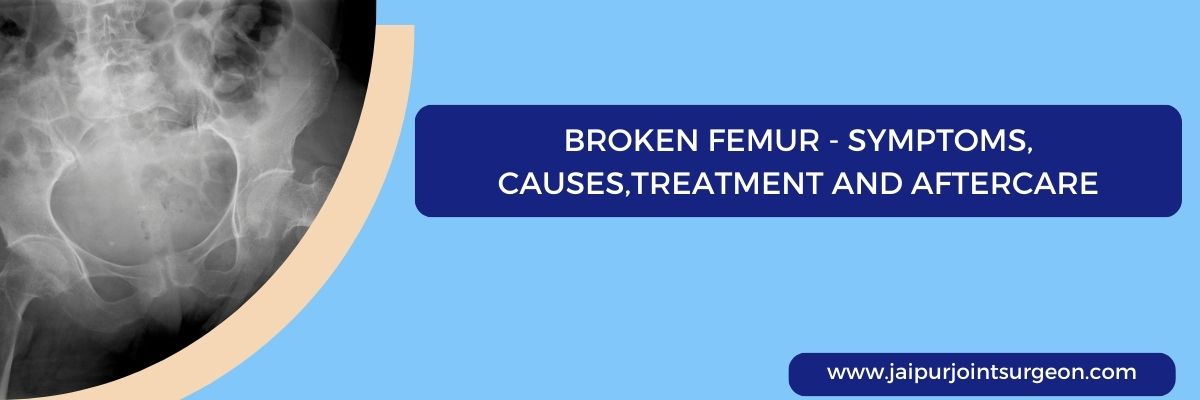
The femur (your thighbone) is the longest, strongest, and heaviest bone in your body.
The femur is among the most essential bones for walking. The femur bone is very strong, so it would take a great deal of force to break it, and it also requires a long time to recover.
If your femur is broken, it is a severe injury that needs to be taken care of right away by a doctor. It takes considerable force to break your femur, for example, in a car accident, a heavy fall, or if someone shoots you. Surgical intervention and physical therapy are required to fix broken femurs. Your broken femur will require several months to heal.
Renowned orthopedic surgeon in Jaipur, Dr. Dilip Mehta, says that people who are older are more likely to have their femurs broken when they fall because our bones get weaker as we age.
How serious is a broken femur?
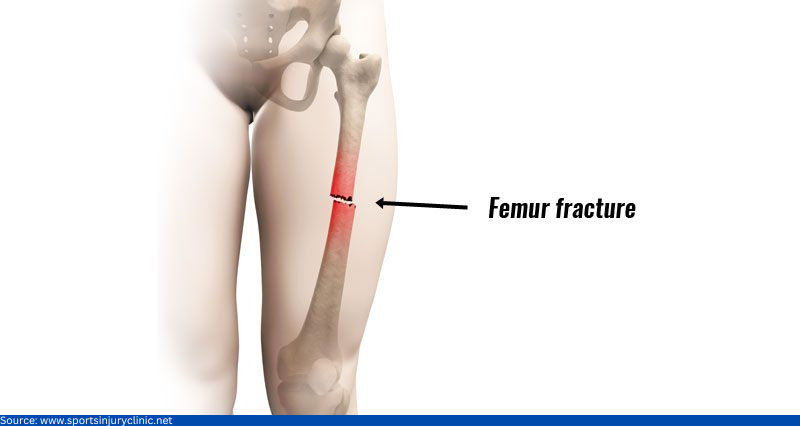
A broken femur is a severe injury, and it may cause the following:
- If your fracture goes through your skin, you will lose a lot of blood.
- If the upper part of your femur is broken, it can damage your hip. (People who have osteoporosis often have this problem.)
- You may go into shock.
- If the break occurs just above the knee, you could severely damage your knee. (People with osteoporosis or who have had knee replacements are more vulnerable.)
Broken femur - Symptoms
Following are the signs and symptoms of a broken femur after a fall or injury:
- You experience excruciating pain.
- The injured leg is unable to hold your weight.
- A piece or more of your femur pierces your skin and causes you to bleed; such a fracture is called an open fracture.
- You can feel the pieces of your femur pushing against your skin without piercing it; such a type of fracture is known as a closed fracture.
- There is swelling and tenderness around your thigh.
- You are unable to move the injured leg.
- The hurt leg might be relatively shorter than your other leg, and it might appear crooked.
If you experience any of these symptoms after an injury or fall, please seek medical attention immediately from a highly-experienced orthopedic surgeon like Dr. Dilip Mehta.
Broken femur - Causes
The most common causes of people breaking their femur are in a car accident, when they fall, or if they are shot. A simple fall from standing can cause a femur to break in an older person.
Some risk factors of broken femurs include:
- People over 65
- People who have a tendency to fall.
- Muscle deconditioning – muscle weakness and deterioration of muscle mass
- Metabolic bone disease
- Metastatic cancer – cancer that is widespread
- Extreme sports or contact sports like football.
Broken femur - Treatment
Most broken femurs will require surgical intervention and medication to heal. Fractures of the femur are treated by moving and realigning the pieces of the broken bone back into place so that the bone can heal.
Medication: Your doctor may give you over-the-counter (OTC) and prescription painkillers prior to and post-surgery to help you deal with the pain.
Non-surgical treatment: Although femoral shaft fractures typically require surgical intervention, a cast is occasionally employed to treat very young children.
Surgical Treatment
Most broken femurs receive surgical treatment in 24 to 48 hours. The open wound, bone, and tissues will all be cleaned during surgery. Fixation is sometimes put off until other injuries or medical conditions or injuries that could be life-threatening are stabilized. Antibiotics are given to people with open fractures as soon as they get to the hospital to lower the chances of infection.
Your doctor may put your leg in traction or a long-leg splint until your surgery. The traction is to hold your broken bones as close to straight as possible and to maintain your leg's length.
The broken pieces of bone are held together by skeletal traction (a pulley system with weights and counterweights). Jaipur’s famed orthopedic doctor, Dr. Dilip Mehta, explains that skeletal traction helps keep your leg straight and is usually able to relieve pain.
Surgical treatment includes:
External fixation: In this surgery, screws or metal pins are put into the bone above and beneath the fracture. The screws or metal pins are fastened to a bar on the bone's exterior. This device is a frame that stabilizes the bones by holding them in the right place and keeps them from moving.
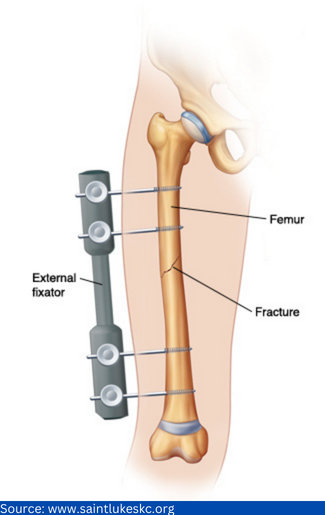
External fixation is not typically a permanent treatment for broken femurs. It is usually applied if the patient has several injuries and is not healthy enough to undergo a more extended surgery at the time.
Intramedullary nailing: Intramedullary nailing is the most common surgical treatment for a broken femur. During this surgery, a rod is inserted through the span of the bone and held in place by screws on both ends.
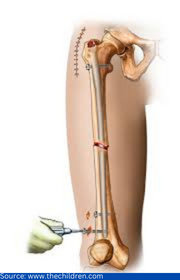
Metal plates and screws: If the fractures extend into either your hip or knee joints, then an intramedullary nailing may not be a viable option and will require metal plates and screws.
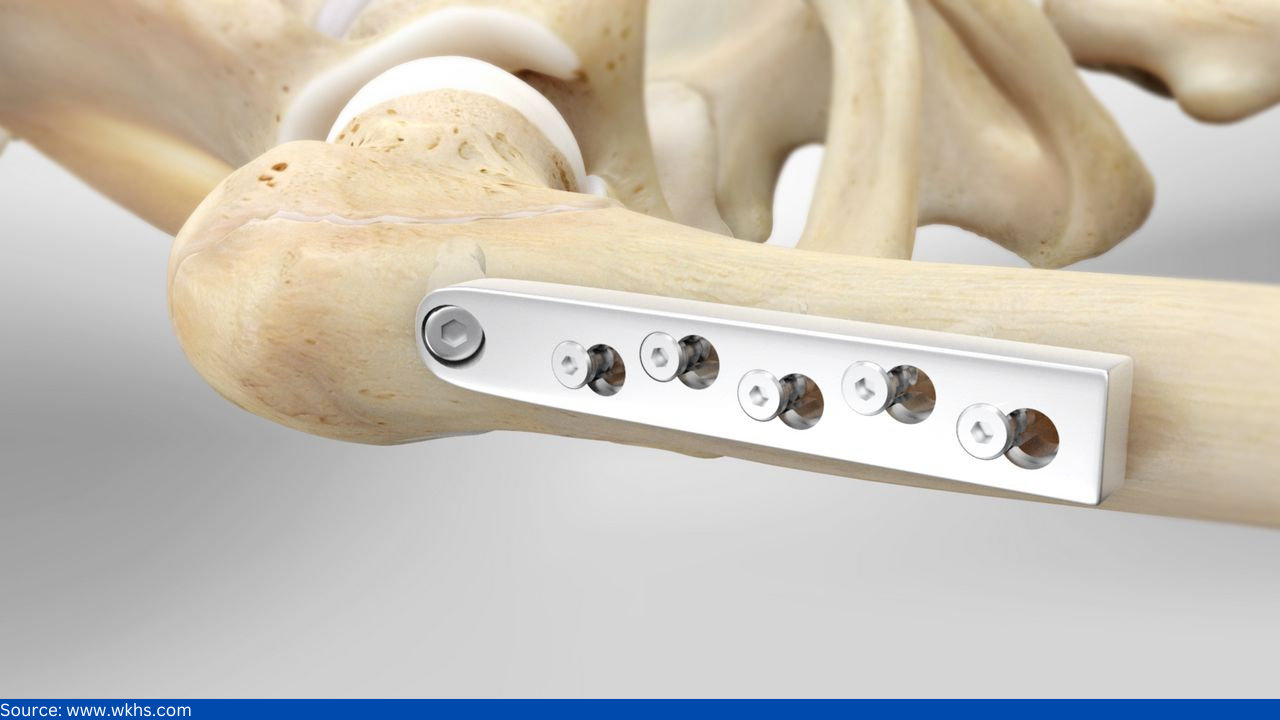
In this procedure, the broken pieces of bone are first put back in their normal places. Metal plates and screws are attached to the exterior of the bone to hold them together.
Post-surgery aftercare
Most breaks in the femur take 3 - 6 months to heal completely. Some people may take longer, particularly if the femoral fracture was open or had broken into multiple pieces or if the patient consumes tobacco products.
Your orthopedic doctor will probably recommend physical therapy to strengthen the muscles around the bone.
A broken femur will no doubt change your life in a big way, but only for a short time. Surgery for a fractured femur usually works, and people can heal and return to their everyday lives.
You will have follow-up consultations with your doctor or nurse every few weeks, starting 2 weeks after surgery. Dr. Dilip Mehta, an accomplished orthopedic doctor in Jaipur, advises that you should talk to your provider if you are worried about how you are doing or if you have specific concerns, like how to deal with pain.
Conclusion

A broken femur should not be taken lightly; it is a serious injury and takes a long time to heal. You might feel like you will never be the same again. You might start to worry and get angry. But please do not get frustrated and decide to hurry up the healing process as it will end up as a setback and further delay the healing process. Talk to your doctor about what resources you can use to stay on track and do not miss your physiotherapy sessions.
If you or a loved one suspects a broken femur and are seeking treatment in Jaipur, please visit Dr. Dilip Mehta for safe and reliable treatment options. With over 15 years of expertise and having treated over 2 million patients, he is frequently called the best orthopedic surgeon
in Jaipur.
